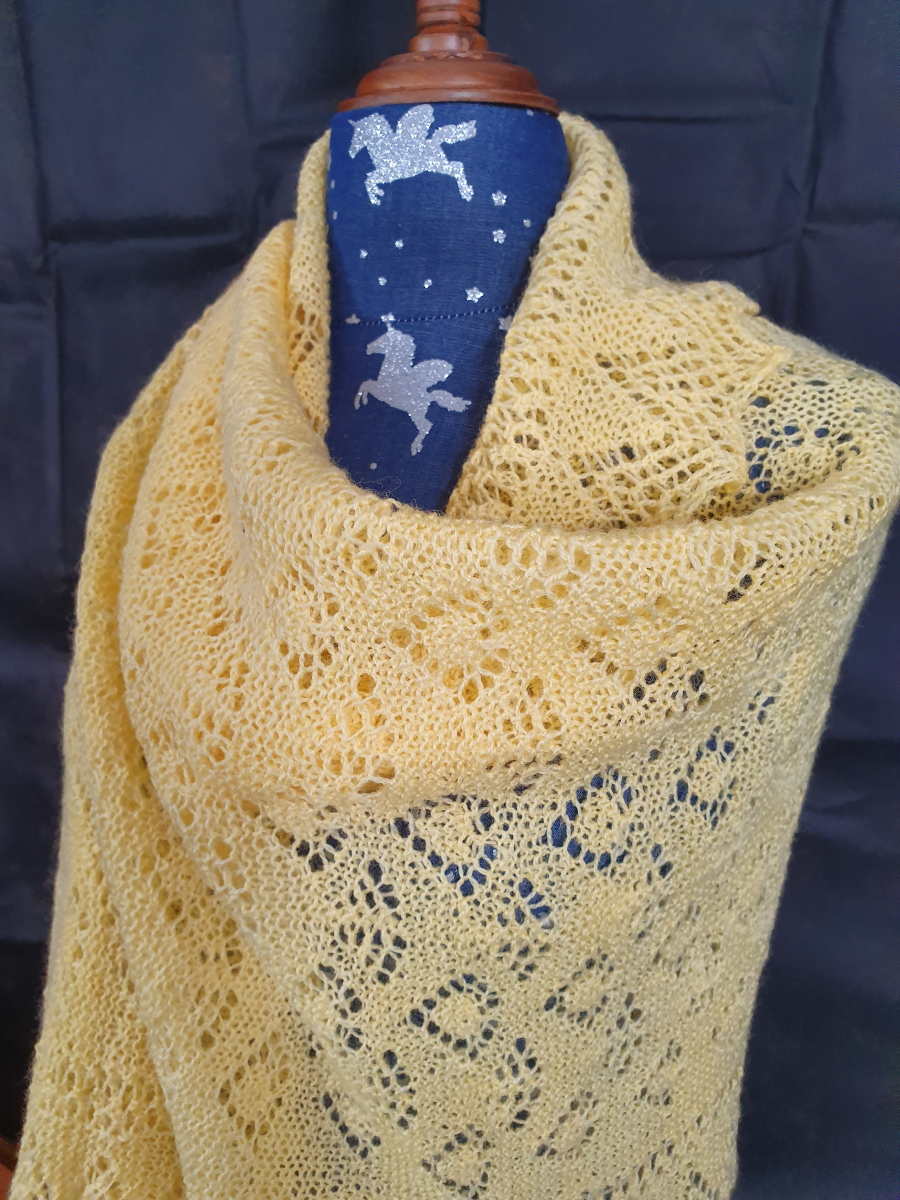ABC Baby Blanket Knitting Pattern
- Home
- Knitting Patterns
- Baby Knitting Patterns
- ABC Baby Blanket Pattern
Quick Links
- Archived - Ask a Knitting Question
- Basic Knitting Stitches
- Beginner Knitting Patterns
- Knitting Abbreviations
- Needle Sizes Chart
- Tension Squares
- Yarn Comparison Chart
FYI: This site receives a small amount in commissions from affiliate links and third-party advertising.
I had fun designing and knitting this lovely ABC Baby Blanket Knitting Pattern. It was a lot of knitting but as it was done one block at a time, it was very easy to put down and pick up again.
Skills You need to master before knitting the ABC Baby Blanket:
- Cast on and Cast off
- Stocking Stitch and Garter Stitch
- Pick up and knit from the edge
- Weaving in loose ends
- Reading and Knitting from a Knitting Chart
Materials You Need to Make an ABC Baby Blanket
To make this blanket, you will need approximately 500 grams of 8 ply (double knit) yarn. I used three different yarns, one a solid colour, and one a variegated baby yarn with pinks, blues, yellows and green for the main part of the blanket and a toning solid for the border.
Most of the blanket is knitted in squares 45 stitches wide by 60 rows with a garter stitch border on each block of 6 rows top and bottom and 6 stitches on either side. Only three blocks have a garter stitch pattern in the centre of the block (the A, B, and C blocks) so it is relatively easy knitting. And you get to choose which method of construction you prefer. My method of choice is modular - I knit the blocks together as I go so there are no seams and very few loose ends to weave or sew in when the blanket is finished - but you can knit individual blocks and sew them together if you prefer.
To make this blanket you will need a pair of knitting needles, I used 3.50mm needles (they were new - wanted to try them out) but I would probably recommend that you use 4.00mm needles with 8 ply wool with the standard tension for that weight of wool (22 sts and 30 rows to 10 cm). So your squares should be approximately 20 centimetres square.
You may have to adjust the needle size if your natural knitting tension does not match (or at least come close to) the tension specified. But as it is a blanket, it is not as critical as it would be for a garment like a sweater. A knitters sewing needle is also handy for sewing in loose ends ore where you have joined in a new ball of yarn.
If you are planning on using the modular method of construction, you will also need four or five stitch holders.
The ABC Baby Blanket is quite easy to knit, as you can see from the photo further down the page. The pattern is just interesting enough so that I didn't get really bored but simple enough that I don't need to concentrate to much while I am knitting.
Tension
The finished size of this blanket is approximately 100 cm wide by 140 cm long and should fit most standard sized cots. To achieve that finished size, your tension needs to be 22 stitches and 30 rows per 10 centimetres. You can find out more about knitting tension squares on my page on how to knit a tension square.
Knitting Instructions for the ABC Baby Blanket
First Block (or all plain blocks in 1st colour if you are sewing your blocks together)
Cast on 45 stitches with 1st colour.
Knit 6 rows
7th row: Knit across the row.
8th row: k6, p33, k6.
Repeat the last two rows another 23 times.
55th - 60th rows: Knit across the row.
22th row: k5, *k10, p10, rep from * to last 5 sts, k5.
For modular construction: leave stitches on a stitch holder
For normal construction: Cast off loosely. Make another 15 blocks in this colour and 16 blocks in the 2nd colour.
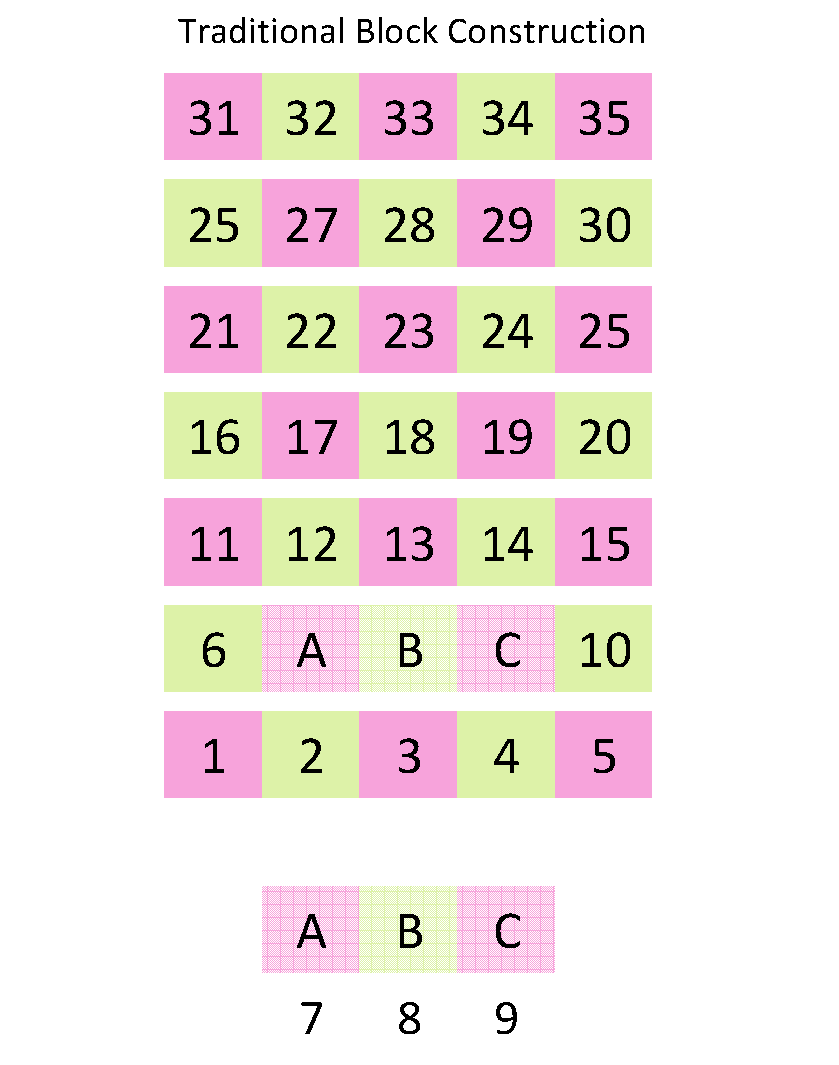
2nd Block (Modular Construction)
Cast on 45 stitches in the 2nd colour and knit 1 row.
Insert the tip of the right hand needle into the first stitch on the first row on your first block and pull through the yarn to form a stitch. Lift the last stitch on the 2nd block up and over the stitch you just formed.
Turn, sl 1 sts and knit to the end of the row. Repeat this process to join the two blocks as you work, slipping the first st on every row and following the pattern set for the first block (i.e., 6 rows garter stitch, 48 rows with the 6 stitch garter stitch border at each side of the block and 6 rows garter stitch).

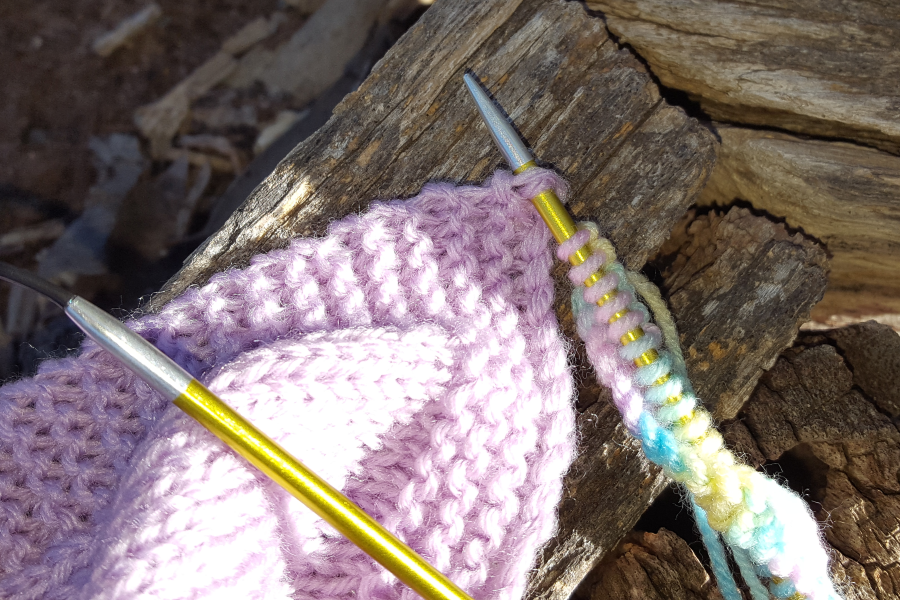

61st row: Knit across 45 stitches on the 2nd block, knit the 45 stitches from the first block off the stitch holder (this 1st row of the 3rd block), turn sl 1, knit 44 sts, then place 45 stitches from 2nd block onto a stitch holder. Turn and work the block on top of the first block, starting with the 3rd row to match.
The blocks are added as diagonal rows
row 1: colour 1 - 1 plain block colour
row 2: colour - 2 plain blocks
row 3: colour 1 - 1 plain block in colour 1, 1 'A' block, 1 plain block
row 4: colour 2 - 1 plain block in colour 1, 1 'B' block, 2 plain blocks
row 5: colour 1 - 1 plain block in colour 1, 1 'c' block, 3 plain blocks
At this point, your bottom row is complete. To start row 6, knit the 45 stitches from the 1st block in row 5 off the stitch holder and join to the 2nd block of the same row. From this point on, all of the blocks you join will be plain stocking stitch with a garter stitch border.
row 6: colour 2 - 5 plain blocks
row 7: colour 1 - 5 plain blocks
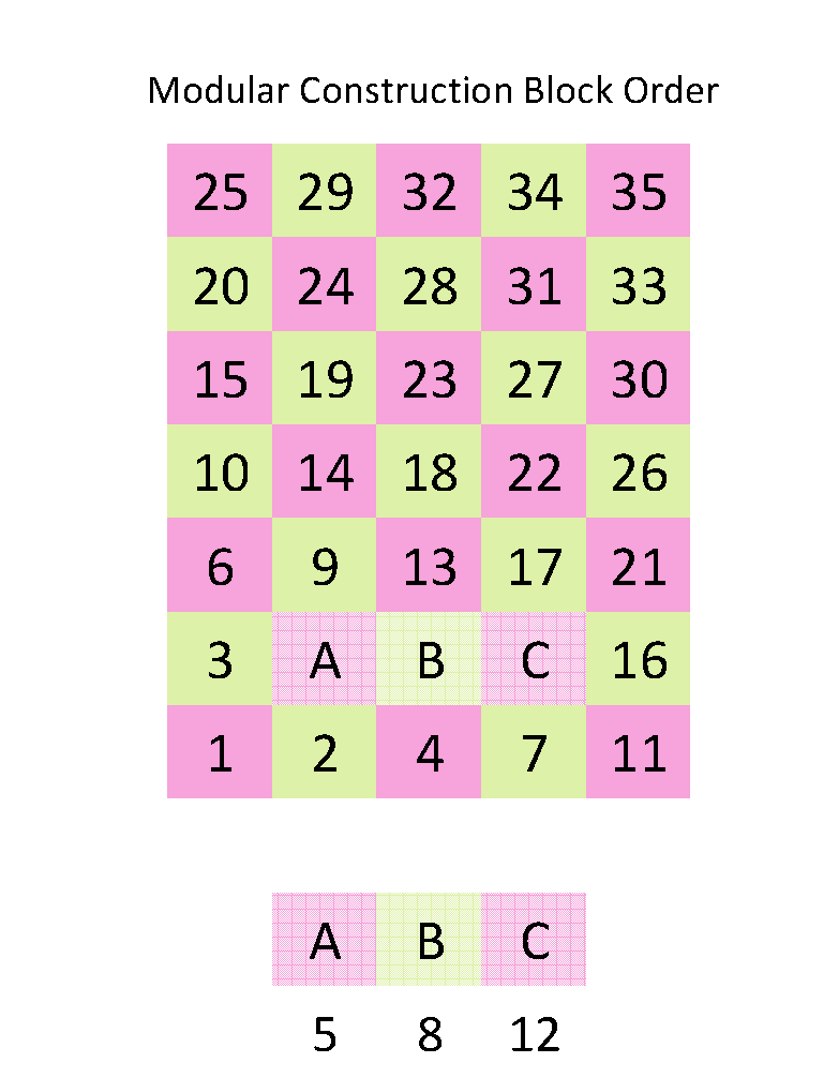
Knitting Charts for the ABC Blocks
The three ABC blocks are knitted using the knitting charts below. Each square with an X in it represents a knit stitch on a purl row which creates the shape of the letter on the right side of the knitted block. All odd rows (right side rows) are knit rows, and all even rows are pattern rows. The odd rows are read from right to left and the even rows are read from left to right.
So for example row 10 on the 'A' Block would be:
Knit 6 sts, purl 4 sts, knit 4 sts, purl 17 sts, knit 4 sts, purl 4 sts, knit to end.
And row 22 on the 'C' Block would be:
Knit 6 sts, purl 4 sts, knit 4 sts, purl 25, knit to end.
Knitting the ABC Baby Blanket Border
Knit across all 225 sts at the top of your blanket (off the stitch holders) and work 24 rows of Garter Stitch. Cast off loosely.
Turn your blanket and pick up and knit approx. 236 stitches along the left hand side (with the right side of the blanket facing you). Knit 23 rows in garter stitch, cast off loosely.
Turn your blanket and pick up and knit approx. 237 stitches across the bottom of your blanket. Knit 23 rows in garter stitch, cast off loosely.
Turn your blanket again and pick up and knit approx. 253 stitches up the right hand side of your blanket. Knit 23 rows in garter stitch, cast off loosely.
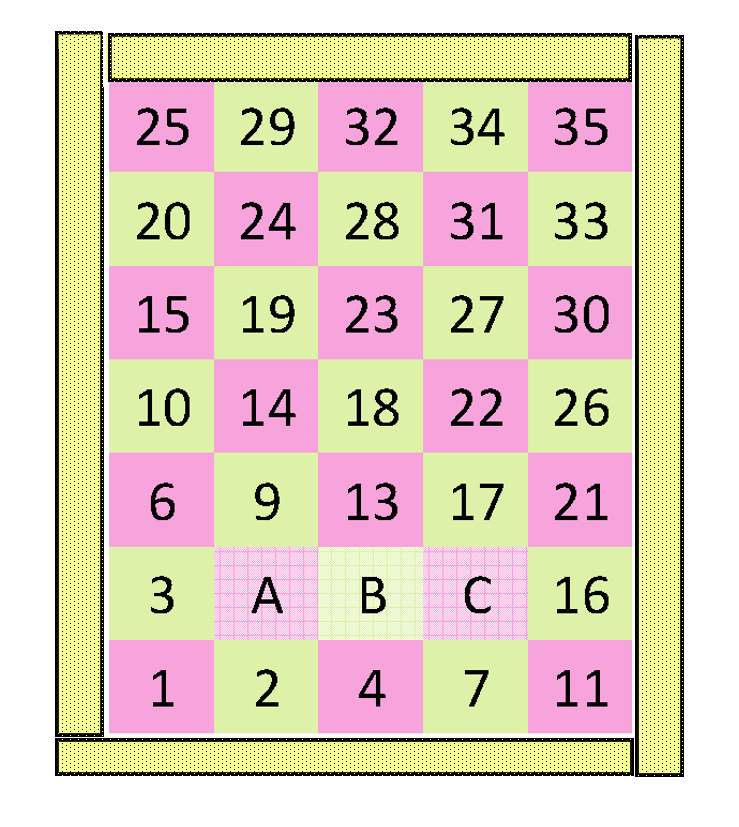 Border Placement for the ABC Baby Blanket | © Deborah Mason & Knitting Naturally
Border Placement for the ABC Baby Blanket | © Deborah Mason & Knitting NaturallyFinishing Your ABC Baby Blanket
Using a knitter's sewing needle weave in all of the loose ends.
Would You Like a Printable Copy of this Pattern?
Just in case you would like to print out a copy of this ABC Baby Blanket pattern, I have created a pdf version of it that you can download.
And don't forget to grab a copy of the knitting charts before you go...
Couldn't Find What You Were Looking for?
Try searching the site using the search box below:


Recent Articles
-
Shetland Knitting and Shetland Knitters
Feb 07, 21 07:44 AM
Shetland knitting and the women in the Shetland Isle who create Shetland lace are among the best knitters in the world. -
Fixing Knitting Mistakes
Jan 28, 21 02:35 AM
When you are learning how to knit, you are going to make a few mistakes. It might not make you happy but fixing knitting mistakes is par for the course. -
Shetland Lace Knitting
Dec 11, 19 07:03 PM
Shetland Lace Knitting is a particular style of knitting that developed in the Shetland Islands and was one of the main exports of the Island early in the last century.
 >
>





